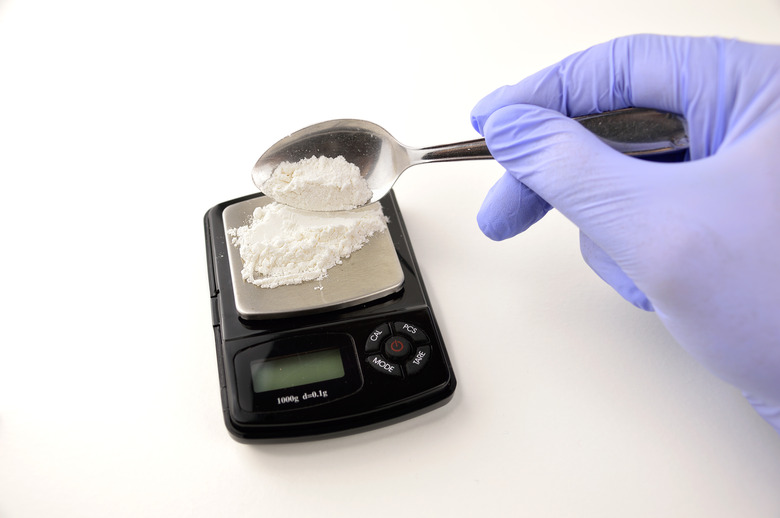How To Convert Cubic Feet To Lbs
Converting cubic feet into pounds is not a direct calculation because cubic feet is a measure of volume and the pound is a measure of mass. A cubic foot of lead, for example, will weigh a lot more than a cubic foot of feathers. The key to converting volume into mass is to use the density of the object in the equation. If you know the object's density, you can convert its cubic feet into pounds with a simple calculation.
Step 1
Write down the density of the material you are converting. It should be expressed as either pounds per cubic foot or kilograms per cubic meter. To convert kg/m3 to lb./cubic feet, multiply by 0.0624. If you don't know the density of the material, try checking the list at Gerry Kuhn's website (see Resources). For example, gold has a density of 19,302.2 kg/m3, which is 1,204.46 lb./cubic feet.
Step 2
Write down the number of cubic feet you are converting. For the gold example, use 20 cubic feet.
Step 3
Multiple this number with the density figure to arrive at your answer on how many pounds it would weight. For the gold example, it would be 20 multiplied by 1,204.46 lb. per cubic feet for a result of 24,089.20 lb. of gold in 20 cubic feet.
Cite This Article
MLA
Taylor, Dan. "How To Convert Cubic Feet To Lbs" sciencing.com, https://www.sciencing.com/convert-cubic-feet-lbs-8432699/. 13 March 2018.
APA
Taylor, Dan. (2018, March 13). How To Convert Cubic Feet To Lbs. sciencing.com. Retrieved from https://www.sciencing.com/convert-cubic-feet-lbs-8432699/
Chicago
Taylor, Dan. How To Convert Cubic Feet To Lbs last modified March 24, 2022. https://www.sciencing.com/convert-cubic-feet-lbs-8432699/
